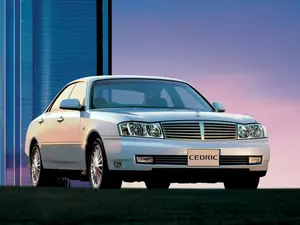
| Vehicle | Precise engine size | Difference from world average | Engine size to consumption ratio | Horsepower from 1 L | Engine size to 100 kg of weight |
|---|---|---|---|---|---|
| 2.5T |
2.5 L (2498 cc) |
6.5% bigger | 131 cc to 1 mpg | 100 hp from 1 L | 147 cc to 100 kg |
| 3.0i V6 |
2.99 L (2987 cc) |
27.3% bigger | 142 cc to 1 mpg | 80 hp from 1 L | 187 cc to 100 kg |
| Vehicle | 2.5T |
|---|---|
| Precise engine size | 2.5 L (2498 cc) |
| Difference from world average | 6.5 bigger |
| Engine size to consumption ratio | 131 cc to 1 mpg |
| Horsepower from 1 L | 100 hp from 1 L |
| Engine size to 100 kg of weight | 147 cc to 100 kg |
| Vehicle | 3.0i V6 |
| Precise engine size | 2.99 L (2987 cc) |
| Difference from world average | 27.3 bigger |
| Engine size to consumption ratio | 142 cc to 1 mpg |
| Horsepower from 1 L | 80 hp from 1 L |
| Engine size to 100 kg of weight | 187 cc to 100 kg |

| Vehicle | Precise engine size | Difference from world average | Engine size to consumption ratio | Horsepower from 1 L | Engine size to 100 kg of weight |
|---|---|---|---|---|---|
| 2.5i |
2.5 L (2498 cc) |
6.5% bigger | 131 cc to 1 mpg | 94 hp from 1 L | 147 cc to 100 kg |
| 2.0i V6 |
2 L (1998 cc) |
14.8% smaller | 83 cc to 1 mpg | 63 hp from 1 L | 133 cc to 100 kg |
| 2.8d |
2.83 L (2825 cc) |
20.4% bigger | 157 cc to 1 mpg | 35 hp from 1 L | 177 cc to 100 kg |
| 2.5i V6 |
2.5 L (2496 cc) |
6.4% bigger | 125 cc to 1 mpg | 76 hp from 1 L | 156 cc to 100 kg |
| 3.0i V6 |
2.96 L (2960 cc) |
26.2% bigger | 148 cc to 1 mpg | 54 hp from 1 L | 197 cc to 100 kg |
| 3.0T V6 |
2.99 L (2987 cc) |
27.3% bigger | 166 cc to 1 mpg | 90 hp from 1 L | 187 cc to 100 kg |
| Vehicle | 2.5i |
|---|---|
| Precise engine size | 2.5 L (2498 cc) |
| Difference from world average | 6.5 bigger |
| Engine size to consumption ratio | 131 cc to 1 mpg |
| Horsepower from 1 L | 94 hp from 1 L |
| Engine size to 100 kg of weight | 147 cc to 100 kg |
| Vehicle | 2.0i V6 |
| Precise engine size | 2 L (1998 cc) |
| Difference from world average | 14.8 smaller |
| Engine size to consumption ratio | 83 cc to 1 mpg |
| Horsepower from 1 L | 63 hp from 1 L |
| Engine size to 100 kg of weight | 133 cc to 100 kg |
| Vehicle | 2.8d |
| Precise engine size | 2.83 L (2825 cc) |
| Difference from world average | 20.4 bigger |
| Engine size to consumption ratio | 157 cc to 1 mpg |
| Horsepower from 1 L | 35 hp from 1 L |
| Engine size to 100 kg of weight | 177 cc to 100 kg |
| Vehicle | 2.5i V6 |
| Precise engine size | 2.5 L (2496 cc) |
| Difference from world average | 6.4 bigger |
| Engine size to consumption ratio | 125 cc to 1 mpg |
| Horsepower from 1 L | 76 hp from 1 L |
| Engine size to 100 kg of weight | 156 cc to 100 kg |
| Vehicle | 3.0i V6 |
| Precise engine size | 2.96 L (2960 cc) |
| Difference from world average | 26.2 bigger |
| Engine size to consumption ratio | 148 cc to 1 mpg |
| Horsepower from 1 L | 54 hp from 1 L |
| Engine size to 100 kg of weight | 197 cc to 100 kg |
| Vehicle | 3.0T V6 |
| Precise engine size | 2.99 L (2987 cc) |
| Difference from world average | 27.3 bigger |
| Engine size to consumption ratio | 166 cc to 1 mpg |
| Horsepower from 1 L | 90 hp from 1 L |
| Engine size to 100 kg of weight | 187 cc to 100 kg |

| Vehicle | Precise engine size | Difference from world average | Engine size to consumption ratio | Horsepower from 1 L | Engine size to 100 kg of weight |
|---|---|---|---|---|---|
| 3.0i V6 |
2.96 L (2960 cc) |
26.2% bigger | 148 cc to 1 mpg | 54 hp from 1 L | 185 cc to 100 kg |
| 2.0i V6 |
2 L (1998 cc) |
14.8% smaller | 83 cc to 1 mpg | 63 hp from 1 L | 133 cc to 100 kg |
| Vehicle | 3.0i V6 |
|---|---|
| Precise engine size | 2.96 L (2960 cc) |
| Difference from world average | 26.2 bigger |
| Engine size to consumption ratio | 148 cc to 1 mpg |
| Horsepower from 1 L | 54 hp from 1 L |
| Engine size to 100 kg of weight | 185 cc to 100 kg |
| Vehicle | 2.0i V6 |
| Precise engine size | 2 L (1998 cc) |
| Difference from world average | 14.8 smaller |
| Engine size to consumption ratio | 83 cc to 1 mpg |
| Horsepower from 1 L | 63 hp from 1 L |
| Engine size to 100 kg of weight | 133 cc to 100 kg |

| Vehicle | Precise engine size | Difference from world average | Engine size to consumption ratio | Horsepower from 1 L | Engine size to 100 kg of weight |
|---|---|---|---|---|---|
| 2.0 |
2 L (1998 cc) |
14.8% smaller | 95 cc to 1 mpg | 43 hp from 1 L | 133 cc to 100 kg |
| 2.0i V6 |
2 L (1998 cc) |
14.8% smaller | 83 cc to 1 mpg | 63 hp from 1 L | 133 cc to 100 kg |
| 2.8d |
2.83 L (2825 cc) |
20.4% bigger | 113 cc to 1 mpg | 35 hp from 1 L | 188 cc to 100 kg |
| 3.0i V6 |
2.96 L (2960 cc) |
26.2% bigger | 148 cc to 1 mpg | 54 hp from 1 L | 197 cc to 100 kg |
| Vehicle | 2.0 |
|---|---|
| Precise engine size | 2 L (1998 cc) |
| Difference from world average | 14.8 smaller |
| Engine size to consumption ratio | 95 cc to 1 mpg |
| Horsepower from 1 L | 43 hp from 1 L |
| Engine size to 100 kg of weight | 133 cc to 100 kg |
| Vehicle | 2.0i V6 |
| Precise engine size | 2 L (1998 cc) |
| Difference from world average | 14.8 smaller |
| Engine size to consumption ratio | 83 cc to 1 mpg |
| Horsepower from 1 L | 63 hp from 1 L |
| Engine size to 100 kg of weight | 133 cc to 100 kg |
| Vehicle | 2.8d |
| Precise engine size | 2.83 L (2825 cc) |
| Difference from world average | 20.4 bigger |
| Engine size to consumption ratio | 113 cc to 1 mpg |
| Horsepower from 1 L | 35 hp from 1 L |
| Engine size to 100 kg of weight | 188 cc to 100 kg |
| Vehicle | 3.0i V6 |
| Precise engine size | 2.96 L (2960 cc) |
| Difference from world average | 26.2 bigger |
| Engine size to consumption ratio | 148 cc to 1 mpg |
| Horsepower from 1 L | 54 hp from 1 L |
| Engine size to 100 kg of weight | 197 cc to 100 kg |

| Vehicle | Precise engine size | Difference from world average | Engine size to consumption ratio | Horsepower from 1 L | Engine size to 100 kg of weight |
|---|---|---|---|---|---|
| 2.8d |
2.83 L (2825 cc) |
20.4% bigger | 113 cc to 1 mpg | 33 hp from 1 L | 177 cc to 100 kg |
| Vehicle | 2.8d |
|---|---|
| Precise engine size | 2.83 L (2825 cc) |
| Difference from world average | 20.4 bigger |
| Engine size to consumption ratio | 113 cc to 1 mpg |
| Horsepower from 1 L | 33 hp from 1 L |
| Engine size to 100 kg of weight | 177 cc to 100 kg |

| Vehicle | Precise engine size | Difference from world average | Engine size to consumption ratio | Horsepower from 1 L | Engine size to 100 kg of weight |
|---|---|---|---|---|---|
| 2.0i V6 |
2 L (1998 cc) |
14.8% smaller | 83 cc to 1 mpg | 63 hp from 1 L | 154 cc to 100 kg |
| 3.0i V6 |
2.96 L (2960 cc) |
26.2% bigger | 148 cc to 1 mpg | 54 hp from 1 L | 197 cc to 100 kg |
| 2.8d |
2.83 L (2825 cc) |
20.4% bigger | 113 cc to 1 mpg | 33 hp from 1 L | 202 cc to 100 kg |
| Vehicle | 2.0i V6 |
|---|---|
| Precise engine size | 2 L (1998 cc) |
| Difference from world average | 14.8 smaller |
| Engine size to consumption ratio | 83 cc to 1 mpg |
| Horsepower from 1 L | 63 hp from 1 L |
| Engine size to 100 kg of weight | 154 cc to 100 kg |
| Vehicle | 3.0i V6 |
| Precise engine size | 2.96 L (2960 cc) |
| Difference from world average | 26.2 bigger |
| Engine size to consumption ratio | 148 cc to 1 mpg |
| Horsepower from 1 L | 54 hp from 1 L |
| Engine size to 100 kg of weight | 197 cc to 100 kg |
| Vehicle | 2.8d |
| Precise engine size | 2.83 L (2825 cc) |
| Difference from world average | 20.4 bigger |
| Engine size to consumption ratio | 113 cc to 1 mpg |
| Horsepower from 1 L | 33 hp from 1 L |
| Engine size to 100 kg of weight | 202 cc to 100 kg |